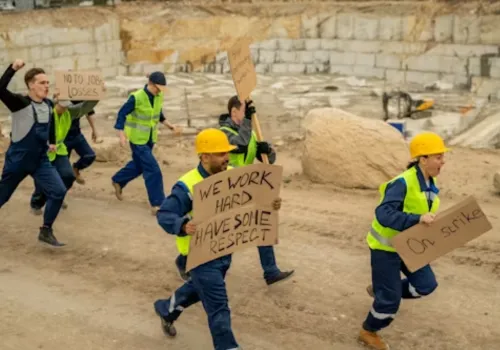
A new wave of immigration crackdowns and workplace raids is expected to make hiring more challenging for U.S. employers in 2025, according to new research.

President Donald Trump’s renewed push on immigration reform is already reshaping the workforce. This week, his administration moved to end Temporary Protected Status for Honduran and Nicaraguan immigrants, a decision that could impact about 76,000 people. On the same day, Border Patrol agents were seen detaining people at MacArthur Park in Los Angeles, where protestors rallied against U.S. Immigration and Customs Enforcement (ICE). Recent ICE operations have targeted workplaces in states like Florida, Louisiana, Texas and Nebraska.
Wells Fargo economists highlighted the ripple effect in a June report, noting that an influx of immigrants in previous years “went a long way toward alleviating … historic labor shortfalls,” particularly during the COVID-19 recovery. “Across all groups, immigration has been a significant propeller of labor supply growth over the years,” they wrote. The report shows that since 2020, immigrant workers made up nearly three-quarters of total labor force growth and are “more likely to be working or actively looking for work than their native-born counterparts.”
But the trend is reversing. The foreign-born workforce shrank by about 150,000 between February and June 2025, compared to an increase of 186,000 during the same stretch last year.

While the current pace of deportations under Trump — about 737 people daily — is roughly equal to the daily average under former President Biden, Wells Fargo says the real challenge is dwindling new arrivals. “While inflows of foreign-born workers to the U.S. labor force are clearly on a downward trajectory, the extent to which outflows weigh on the foreign-born labor pool is less clear,” the report said.
Even if deportations remain steady, fewer new immigrants combined with slow native-born population growth will likely “keep the potential pool of workers historically tight,” the economists concluded. “Thus, the hiring challenges that seemed like an anomaly following the pandemic and even in the late 2010s could increasingly feel like the norm.”
Labor advocates warn that industries heavily dependent on immigrant labor — like agriculture, hospitality and construction — could see the biggest impact. Some employers are already shifting recruitment strategies, offering higher wages or stepping up automation plans to offset worker shortages.
At the same time, worker advocacy groups are urging companies to adopt stronger protections for immigrant workers, fearing that increased raids may drive more people into the underground economy or deter them from reporting labor violations.
Meanwhile, some economists suggest that states with more immigrant-friendly policies could see a competitive advantage in attracting the shrinking foreign-born workforce — a factor that may widen the economic gap between regions in the years ahead.
Originally reported by Caroline Calvin in Construction Dive.